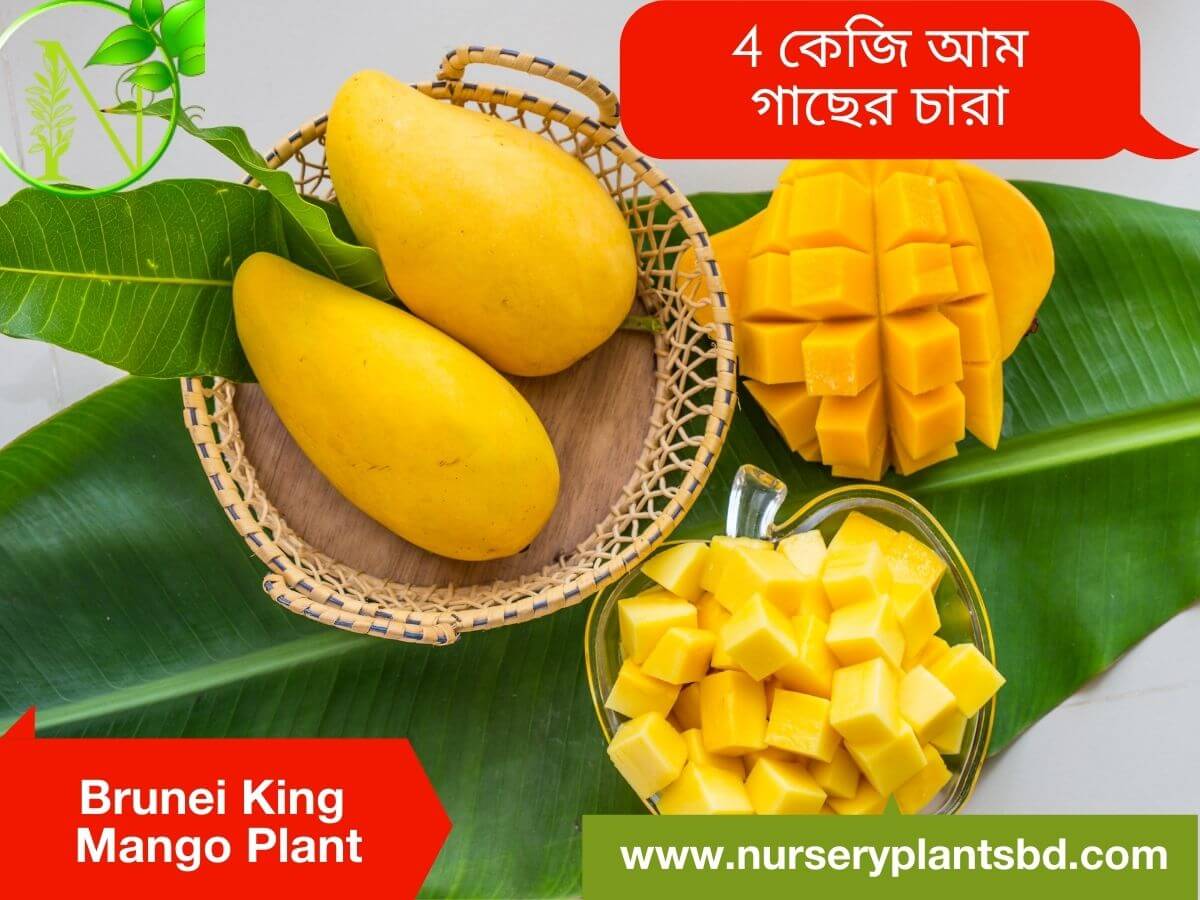Brunei King Mango
Brunei King Mango has been cultivated in South Asia for thousands of years and by the 4th and 5th centuries BC they reached East Asia. By the 10th century AD, plant growth had begun in East Africa. Ibn-e-Battuta, a 14th-century Moroccan traveler, first reported on it in Mogadishu. Its cultivation reached Brazil, Mexico, and the West Indies, where favorable weather allowed it to grow.
Brunei King Mango is now grown in tropical and subtropical climates. More than a third of the world’s mangos are grown in Asia, including Pakistan, China, and India. Other farmers include South, North, and Central America, the Caribbean, west, south, and central Africa, Australia, Bangladesh, and Southeast Asia.
Pakistan is a major exporter, exporting about one percent of international mango trade, using most of its mango production.
Mango is usually tasty, although the taste and texture of mango meat vary from all cultivars, some with a pulpy and soft texture like an overripe plum, and some with firm flesh.
Mango is widely used in the table. Unripe and sour mangoes are played in chutneys, cucumbers, or side dishes. They can also be eaten raw with chili, salt, or soy sauce. A cool summer drink can be made with a mixture of milk to make the Brunei King Mango move with more sugar.
Ripe mangoes are eaten fresh; however, they can have many other uses for cooking. Mango-Lassi, a popular beverage made throughout South Asia, is made by mixing ripe mangoes, peeled mango, or mango meat with ginger and sugar to taste. Mature mangoes are used to prepare the cards. Mango can be used to make mango nectar, juices, and flavoring agent as well as a great ingredient in ice cream and sorbates.
In Central America, mangoes can be eaten raw with vinegar, salt, hot sauce, and black pepper or in various ways. Fried and salted pumpkin seeds (pepita) with salt and salt are common methods for eating raw mangoes. Some people also add chili sauce or soy sauce to it to enhance the flavor.
Portions of mangos can be processed and used as a topping in ice cream or can be mixed with milk and ice to make milkshakes. Delicious coconut-flavored rice can be served with sliced mangos as a dessert.
To know about Mango in detail, just Click Here
Where does Brunei King’s Mango fruit come from?
Perhaps, you are already familiar with Brunei King Mango as the best fruit you will always want to eat or combine this fruit into a delicious juice. Certainly, we cannot find the fruit of Brunei King Mango in all countries around the world. The following description will tell you more about the history of this mango and its great benefits. Check it out.
There are many people out there who like to eat mango fruit the most because of its delicious taste and great benefits. It contains the essential nutrients that people need in their daily lives. First of all, you should know that mangoes belong to the genus Mangifera. It contains many species of tropical fruit trees from the flowering family Anacardiaceae.
It comes from India, and it is grown in many tropical areas there. Over time, mangoes are still widely distributed throughout the world. It becomes one of the most widely used fruits in food, juice, taste, aroma, and color. It is said to be the best fruit when people act as a common ingredient in fresh working foods.
What about nutrition?
Mango is rich in various phytochemicals and nutrients. Therefore, you will never wonder if it is called the great fruit. The word is used to describe the potential health benefits of certain edible fruits. It is also high in fiber prebiotic dietary, vitamin C, polyphenols, and provitamin A carotenoids. Besides, mango contains essential vitamins and minerals in the diet.
By eating mango fruit, you will reap many benefits. It is tasty and fresh at a time. What are you waiting for? Take and enjoy a healthy lifestyle.
Fruit’s Name: Brunei King mango ( Aam)
Genesis Method: Viniar and Cleft kolom
Pair Connecting Property
Age: 1 Year
Height: 60-100 cm
Height from Kolom: 20-30 cm
Kolom Property
Age: 3-4 Months
Diameter: 1.00-1.50 cm
Complete Kolom Plants Property
Age: 1 Year
Height ( cm ) / Weight ( gm ): 60-100 cm
External Structure: Vertical, Straight, and Fresh.
Save from: Malformation, Anthroknose, Leaf destroyed evil attack.
| Properties | Complete Kolom Plants Property | Kolom Property |
|---|---|---|
| Age | 1 Year | 3-4 Months |
| Height ( cm ) / Weight ( gm ) | 60-100 cm | |
| External Structure: | Vertical, Straight, and Fresh. | |
| Diameter: | 1-1.5 cm | |
| Save from: Malformation, Anthroknose, Leaf destroyed evil attack. | ||
To See other Mango fruit plants, just Click Here
Specification: The Best Brunei King mango trees For Sale
|















There are no reviews yet.